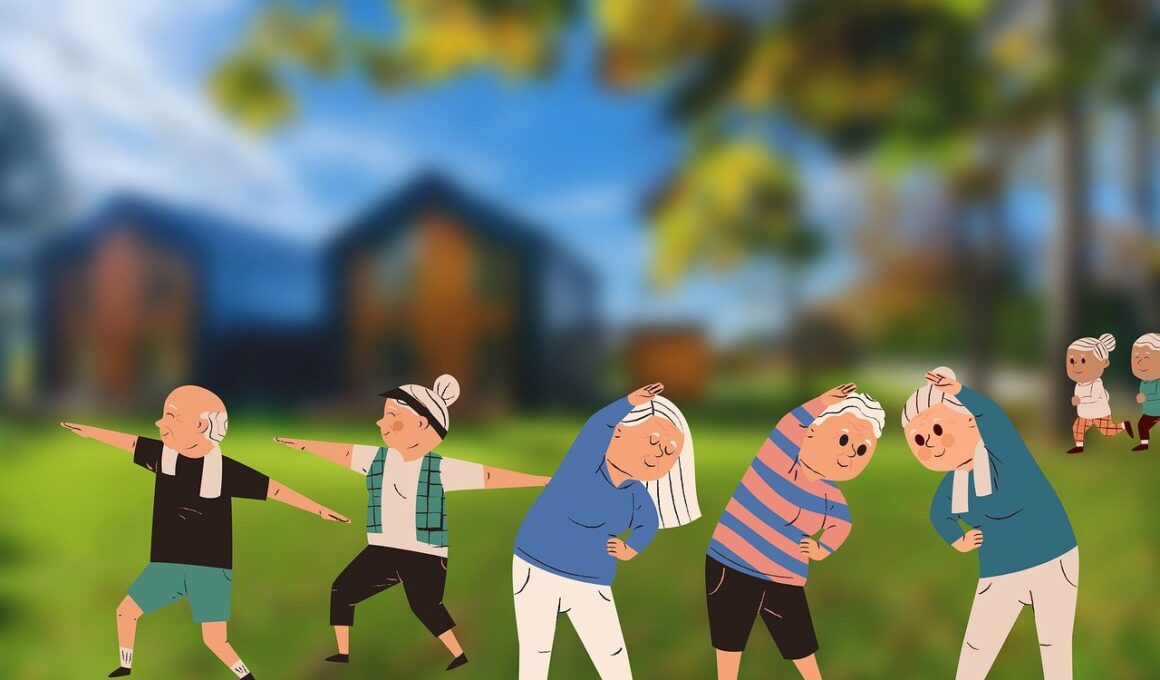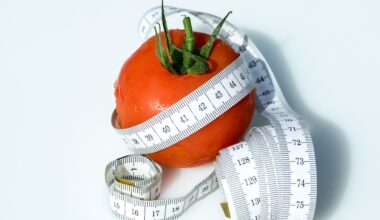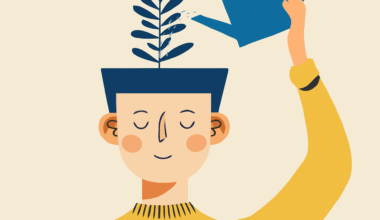Guidelines for Starting Pilates After 60
As we age, staying fit becomes increasingly crucial for maintaining health and mobility. Pilates offers an excellent way for seniors to improve flexibility, strength, and balance. Before embarking on your Pilates journey, it’s essential to consult with your healthcare provider. They can offer advice tailored to your unique health needs. It helps to know what limitations may exist due to prior injuries or conditions. Start with a trained instructor specializing in Pilates for seniors. These experts can modify exercises to ensure safety and effectiveness. When starting, focus on your breathing and alignment. The fundamentals provide a strong foundation for advanced movements later. Always listen to your body, especially during exercises that may feel intense. Discomfort sometimes indicates that you’re pushing your limits, but pain signals the need for caution. Consider beginning with classes specifically designed for seniors, which often incorporate gentle adaptations. Gradually incorporate Pilates into your weekly routine. Consistency is key to reaping the long-term benefits. Remember, every little bit counts towards a healthier, happier you. Make a commitment today to prioritize your fitness and explore new realms of wellness with Pilates.
Incorporating Pilates into your routine may feel daunting at first, but the journey can be rewarding. One vital tip for seniors is to establish a regular schedule. Consistency builds strength and the right habits. Aim for two to three sessions each week for a balanced approach. Each session should typically last around 45 minutes to an hour. The choice of setting also plays a significant role in your practice. For some, group classes can provide motivation and social interaction. Others may prefer the comfort of practicing at home. If choosing home workouts, use reliable online classes or video tutorials to guide your steps. Ensure you have the necessary equipment, such as a mat and perhaps resistance bands. Use props like foam rollers or cushions to add comfort and support where needed. Remember, the equipment should enhance your experience to help you achieve your goals. The right environment will encourage dedication and focus. This experience is not only physical but also mental, providing a holistic approach to well-being. Understand your pace, embrace the challenges, and celebrate every small victory along the way. With compassion towards yourself, lasting change can happen more comfortably.
Listening to Your Body
Listening to your body is one of the fundamental principles of Pilates. This becomes even more critical for seniors starting this exercise. While Pilates is generally safe, every individual’s body may react differently to various movements. It’s okay to modify or skip exercises that cause pain or discomfort. Your body speaks volume; pay close attention to those signals. The objective of Pilates is not to achieve perfection but to cultivate awareness and balance. Training with an experienced instructor can provide the necessary guidance to understand your limits. Perform exercises at a comfortable pace, allowing ample time for your body to adapt. It’s especially important to avoid overexertion, which can lead to injury. Focus on mastering the foundational principles before advancing to more complex movements. Regular practice will gradually enable strength and flexibility, facilitating progression. Staying in tune with how your body feels will empower you to make informed decisions. Celebrating small milestones can boost your confidence and motivate you. Maintaining a positive mindset is vital on this journey toward health and fitness. Existing challenges may become sources of personal growth and achievement.
Hydration is another crucial aspect to consider when starting Pilates after 60. Maintaining adequate hydration supports overall health and performance. As we age, our bodies may require more nourishment to function optimally. Drink water before, during, and after each session to help regulate your body temperature and support joint lubrication. Proper hydration can also enhance your energy levels, which is essential for any workout routine. Consider integrating healthy snacks that are rich in nutrients and easy to digest. Light snacks can help sustain your energy for longer workouts. Foods such as fruits, yogurt, or whole grains can be excellent choices to complement your hydration. Consult a nutritionist for personalized recommendations tailored to your lifestyle. Understanding the right fuel for your body can dramatically affect your Pilates practice. Healthy eating habits directly influence performance and recovery. Hence, focusing on balanced meals will contribute to a sustainable fitness regimen. Strike a balance between hydration and nutrition to maximize the benefits of your practice. As you embrace Pilates, recognize that self-care plays a huge role in your journey towards enhanced well-being and fitness.
Community and Support
Joining a community or finding a support system is another beneficial aspect of starting Pilates as a senior. Engaging with like-minded individuals who share similar interests can enhance your motivation and accountability. Many yoga and Pilates studios offer special classes tailored for seniors, providing an environment that encourages friendship and collaboration. Group classes foster a sense of camaraderie and provide additional encouragement. Meeting regularly allows members to share their experiences and tips. Additionally, these connections can often lead to meaningful social interactions beyond the studio. Online platforms also present opportunities for connection if in-person classes are not possible. Supportive social interactions contribute to overall mental health and well-being, continuously reminding you of your goals while celebrating progress. You may also consider enrolling with a friend or family member. Working alongside someone familiar can make starting this journey less intimidating and more enjoyable. Relishing each other’s progress and setbacks cultivates a deeper bond and strengthens your resolve to stay committed. Embrace the support around you and let community connections ignite your enthusiasm for this revitalizing practice.
Tracking progress is an essential part of maintaining motivation throughout your Pilates journey. Keeping a journal can be a useful tool for documenting your workouts and feelings after each session. Reflecting on your progress can help you see how your strength and flexibility improve over time. Noticing mini milestones achieved can significantly boost confidence when faced with challenges. Remember to note which exercises felt good, and what adjustments you made. These reflections serve as valuable insights into your evolving practice. Celebrate every small success, no matter how minor it may seem. The journey of fitness and wellness is not only about the destination but also about enjoying the ride. Consider sharing the progress with your support system as well. Demonstrating progress can inspire both you and others. Using various metrics can also encourage you to continue, such as measuring the flexibility achieved or the endurance experienced over time. Setting short-term goals leading up to larger aspirations can keep your practice focused. Continuous improvement is the essence of growth, so remain patient and dedicated. With time and persistence, you will see signs of transformation in your physical and mental well-being.
Conclusion
In conclusion, starting Pilates after 60 can be a transformative experience that promotes well-being and vitality. Embrace the journey with an open mind and a positive attitude. The benefits of Pilates extend beyond physical fitness, fostering mental clarity and emotional strength. Take advantage of community support, and trust your instincts to guide your practice. Each small effort you invest contributes to a healthier lifestyle overall. Prioritize self-care, and recognize that every person’s journey is unique. Appreciate the joys of movement, breathing, and connection to oneself. At this stage, it’s essential to honor your body, giving it the love and respect it deserves. Your commitment will lead to profound changes that enhance your quality of life. The ultimate goal of Pilates is balance—the balance between strength, flexibility, and mind-body connection. Starting this practice could lead you to discover new abilities within yourself. Additionally, don’t hesitate to explore various Pilates styles to find the one that resonates most with you. Embrace every step you take towards a healthier you. Empower yourself and your ability to move gracefully and live enthusiastically in your golden years.
In summary, embracing Pilates after 60 is a choice that can enhance your health significantly. The emphasis should be on enjoying the process and not rushing the results. Every individual’s experience is different, and the journey can be incredibly rewarding. To get started, set realistic and attainable goals tailored to your current state of health. Incorporate both physical and emotional aspects into your practice, ensuring a holistic approach to wellness. Make informed decisions, stay motivated through community, and celebrate your journey. The simple act of committing to 30 minutes of movement a day can lead to profound benefits over time. As you dive into this invigorating practice, continuously recognize the significance of self-care and attention. Hydrate and nourish your body to facilitate recovery and enhance performance. Foster friendships within your Pilates community to share experiences and insights. Positivity cultivates growth, and connecting with others will uplift your spirit. So gear up for your Pilates journey—transform your body while nurturing your mind. May this creative, supportive environment become a significant part of your life. Enjoy each moment as you embrace this exhilarating path to health and personal discovery.


